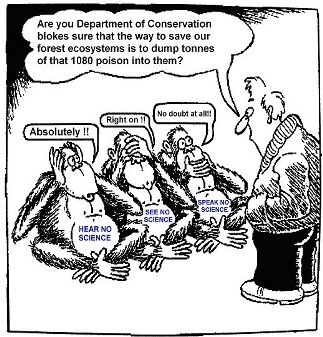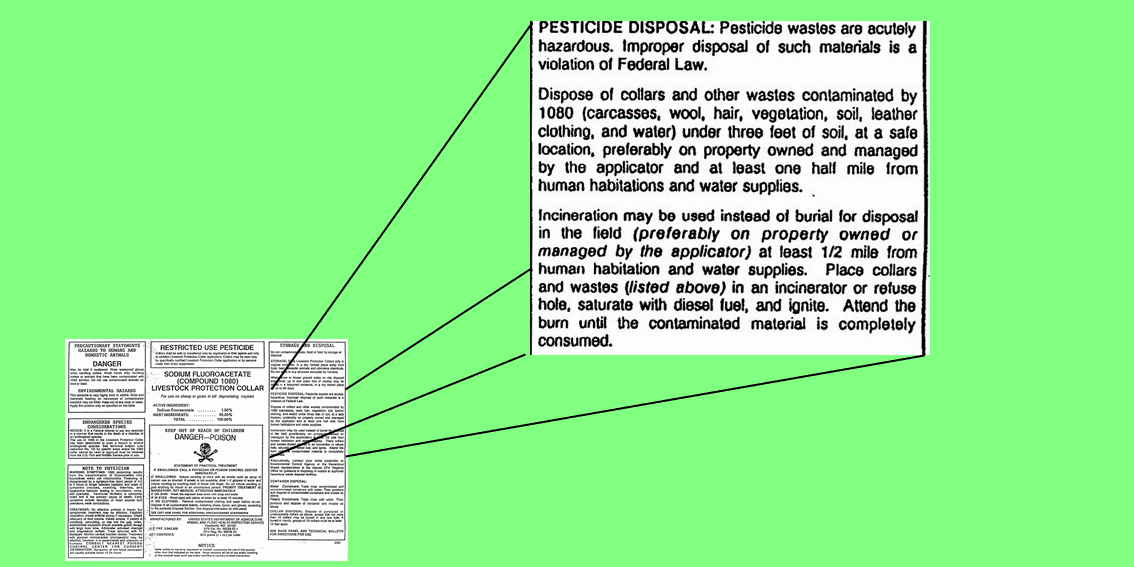






|
1080 SCIENCE
|
|
A lot is talked about 1080 science - from both sides of the debate.
There is also much misinformation broadcast. When it comes to statistics, it seems that anyone can achieve results proving them correct, so long as only limited information is taken from studies. Here we have some links to several scientific papers and related websites. We encourage you to research the science for yourself and make up your own mind about the sense - or non-sense of aerial 1080 poisoning, and the wisdom, or stupidity, of allowing it to continue. |
|
In the past, promoters of 1080 poison have stated that this lethal substance dissolved into harmless
substances in water, therefore an animal could not be poisoned by drinking from a stream or puddle containing 1080 bait. Forest & Bird liken this deadly poison to Salt and Vinegar. Maybe we should believe their fairy story for schoolchildren: |
|
Original 1080 product label from the U.S. Note (above) the disposal
precautions for a product containing only 1% Compound 1080. |
|
" I nga wa o mua" - The past informs the present.
" Foresight should be sought as hindsight is dearly bought." |
|
A study by U.S. scientists,
Pat & Quinn Whiting O'Keefe. |
|
Animal Control Products Ltd. Wanganui, NZ.
SAFETY DATA SHEET May be fatal if swallowed. Wear waterproof gloves when using 1080. Wash hands after handling solution or animals that have been contaminated with 1080. Do not use poisoned or contaminated animals for food or feed. This product is toxic to most wildlife. Birds and mammals feeding on carcasses of contaminated animals may be killed. Take measures to minimise the chance of baits entering any body of water. Apply the product only as specified by its label directions. Where practicable, the exposed bodies of all poisoned animals should be collected and destroyed by complete burning or deep burial at a landfill approved for hazardous wastes. Dried carcasses may remain dangerous to dogs or cats for an indefinite period. |
|
A paper by Sean Weaver PhD.
|
|
Ref. NZ Journal of Ecology.
|
|
Scientific study by Eason & Turk.
|